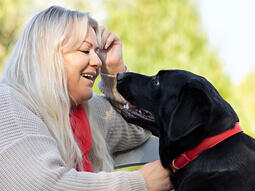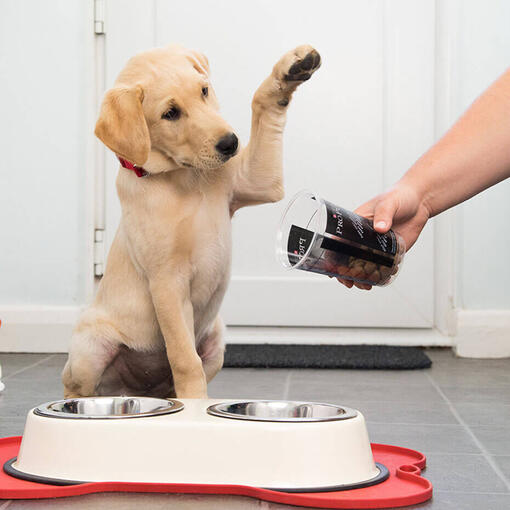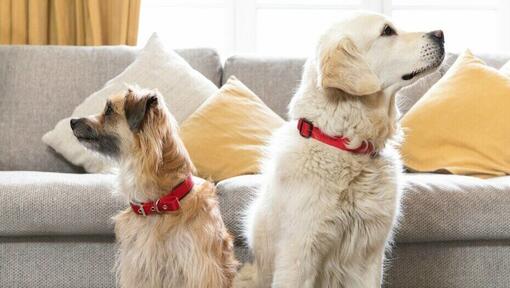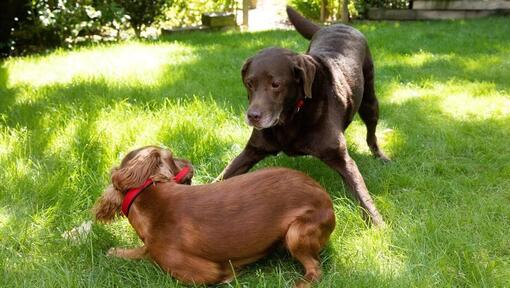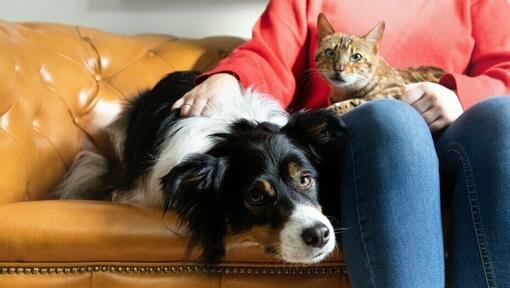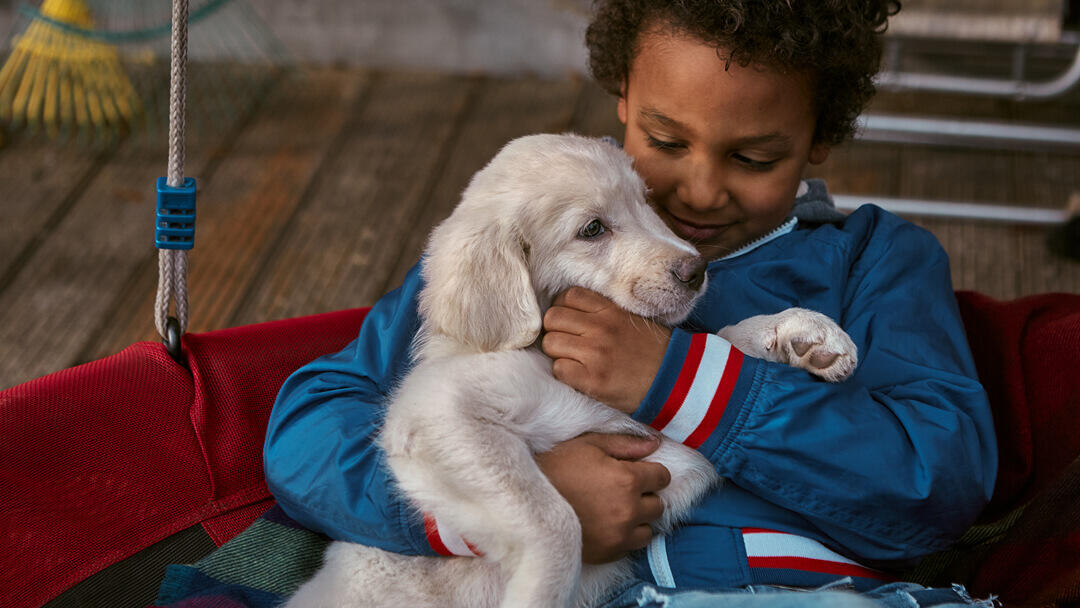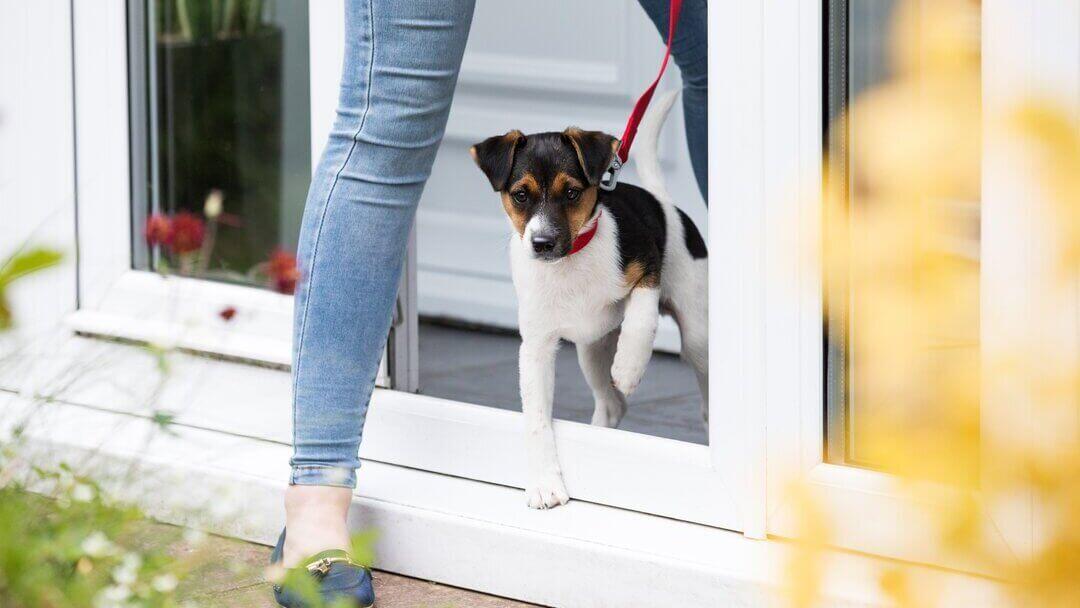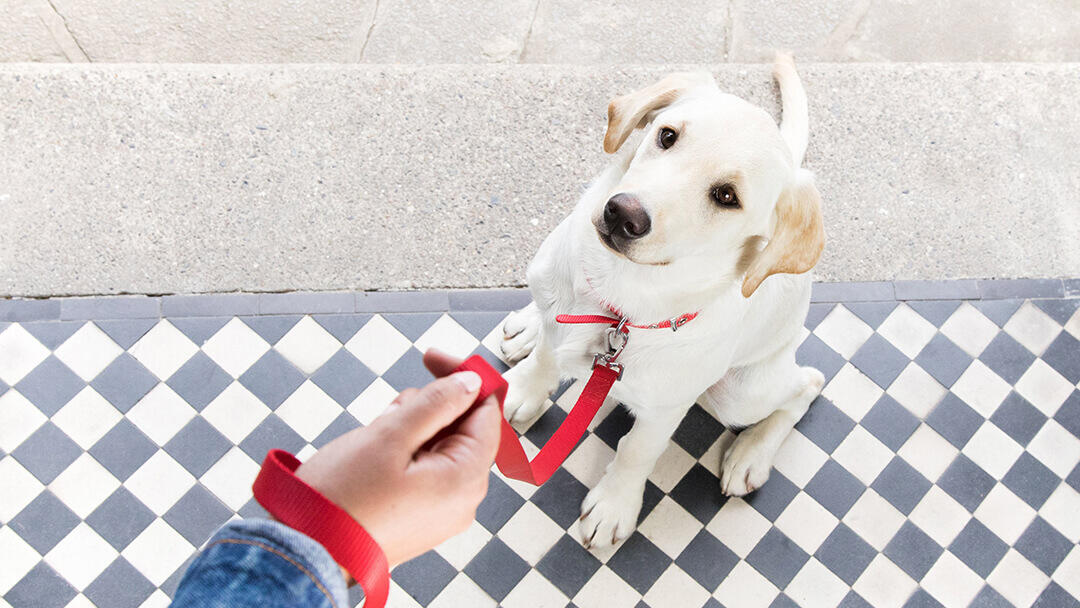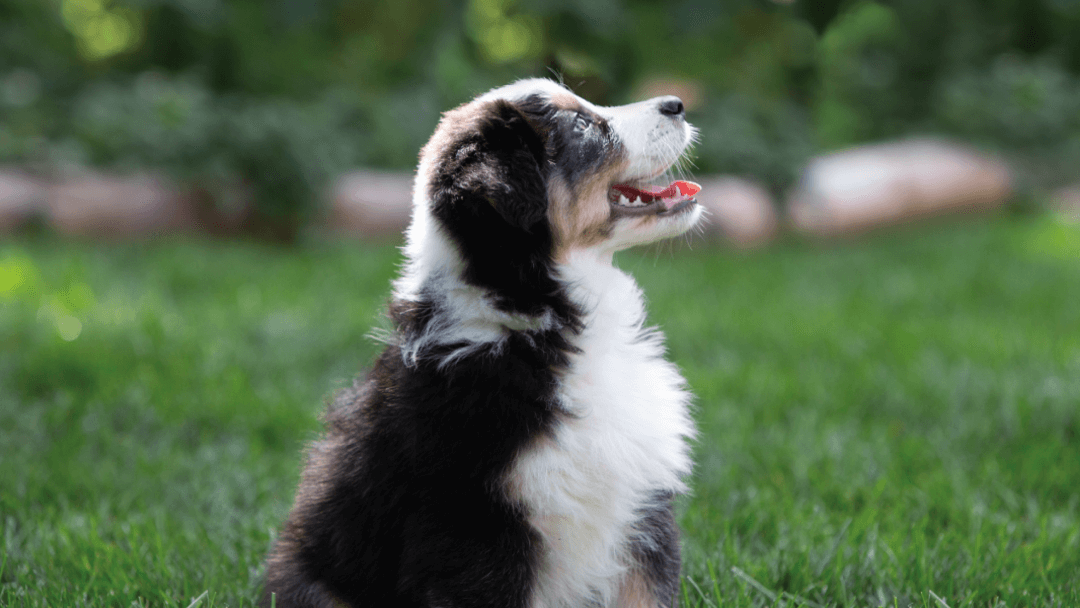

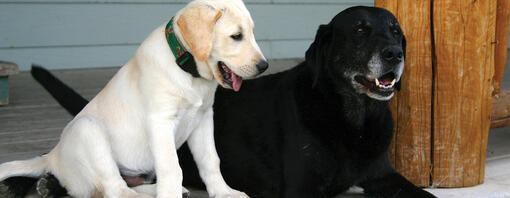
Dogs usually make firm friends easily, and your pup will almost certainly love being around other canine companions. In fact, they’ll probably jump at the chance to play with any animal, including cats. Here is how to introduce a dog to another dog or to the other pets in the family.
As with any new experience for your pup, it’s important to introduce them to other pets carefully, to give their friendship the best possible start. But oftentimes this is easier said than done. An older dog can get territorial when they’ve stopped being the only four-legged member of the family. And a cat will let you know in no uncertain terms when they’re not happy with the new roommate.
So, find out how to introduce a dog to a cat or a puppy to an older dog without World War III breaking out right in your living room? We’ve broken down the process of introducing a new dog into easy steps. Here is what you can do to help make the experience a smooth transition to family life for the new arrival and keep fellow pet residents calm during those first interactions.
"While dogs and cats can often get on well together, some pets are best kept away from dogs. Rabbits, guinea pigs, hamsters and reptiles, for example, should be protected at all times."
How to introduce a new puppy to your dog
We understand puppy socialisation can take time, and introducing a new puppy to dogs can be daunting. Your existing dog is probably used to having the house to themselves, so it can come as a bit of a shock to them to have to share for the first time! Try these tips on how to introduce a dog to another dog, and this process can be as smooth as possible.
The first few hours
Your puppy needs some time to get used to their new home and their new family before they meet their new non-human family – so sometimes it is easier if your older dog is out of the house to start with. If they are used to staying with a family member, they could have a night’s visit away – or else going out for a long walk can just be enough to give your puppy a chance to explore their new home.
Set up baby gates in the doors of your house so both dogs can see each other but can be kept separate and safe while they get used to each other’s presence.
Puppy pens can be really helpful here too.
Making the first introductions
Once your puppy has had a chance to settle in, go to the toilet, explore the room/s they are going to be living in and is relaxed and happy, you can put them into a play pen so they are safe, and bring in your older dog. If you know your dog will be calm and quiet, this is better done off lead so the dogs can use their full range of body language and communication. They can also control the amount of interaction they want. If, however, you know your older dog will come in like a whirlwind, a harness and a long training lead might be the best option.
Keep everyone calm while introducing new puppy to dogs
Keep the meeting low-key and calm. You do not really want to be looking for them to play – just be able to see, hear and sniff each other, and be calm and happy in each other’s company and begin to get used to each other. Reward calm, restrained interactions with gentle strokes, calm words and perhaps some small treats.
If things start to get boisterous, use the baby gates to give a little more distance between them.
Very soon, they should be relaxed enough to meet outside of the pen. This is best done at a time when both dogs aren’t full of energy – so after your older dog has had a walk. Again, if you think things could get boisterous, have your older dog on a harness and long lead – just in case you have to stop any over-enthusiastic play that could scare your puppy.
While your puppy is young and in these early days, supervise all interactions between them.
Keep the first interactions short
Keep the introductions short, but frequent, and they should soon become the best of friends.
Top Tip: Before introducing your puppy to an older dog, make sure your existing dog's vaccinations are fully up to date, so that everyone stays happy and healthy.
If you have any concerns about the process of how to introduce a puppy to an older dog, or have any concerns, ask for help ahead from a behaviourist or trainer.
How to introduce dog to cat or kitten
If your new puppy or dog is relaxed and comfortable in their new home, it’s time to introduce them to your existing cat. You’ll need to be patient and give your cat time to get used to their new housemate, particularly if your cat hasn’t lived with a friendly dog before! Here is how to introduce dog to cat and help them become friends.
Keep both your dog and your cat relaxed
Introducing a puppy to a cat can be a bit daunting. It’s not unusual for cats to react to the new dog by hissing, or trying to escape by running or hiding. So, your job is to help both relax in each other’s company.
Keep both your pets safe during their first interactions
The most important consideration when introducing a kitten to a dog is safety. Dogs can get very excited around cats, so it can take time for them to learn to get along!
Let your cat lead any meetings. Have your puppy in a play pen or a crate, and let your cat come into the room. They can then approach the puppy if they want to – or far more likely totally ignore them! This way they can both get used to seeing each other safely and slowly get used to being in each other’s company.
Reward good behaviour
When thinking about how to introduce dog to cat, remember to reward your dog when they’re calm and, even if they bark excitedly, stay calm yourself.
Aim for short sessions and frequent breaks
Introducing your dog to the cat works best when you keep interactions to short sessions of a few minutes each time, in different rooms, several times a day so that they get used to seeing and smelling each other throughout the house.
Once your puppy is happy to be on a collar and lead, you can begin to have them in the same room – but with your puppy on the lead so you can make sure they don’t chase the cat. This can become an addictive game for some puppies so it is always best prevented.
Allow them to investigate one another if they both are happy with that, and make sure you give them lots of love and affection if they tolerate each other! Remember to stay calm yourself if either of them show they’re unhappy. Do this frequently visiting as many rooms in the house as possible.
Letting your dog off the lead
Supervise them until you know they’ll get along and only let your dog off the lead once you’re confident they won’t react or try to chase your cat. Make sure your cat has access to areas out of the dog’s reach, and can escape if they’re feeling unhappy.
The use of baby gates will allow the cat to escape from the puppy if they need to. Also make sure your cat can still access food bowls, water, litter trays, access to outside etc without having to go past the dog.
Separate them at mealtimes
Separate cats and dogs at mealtimes so both can eat in comfort without the risk of each other stealing food.
Can puppies be around cats before vaccinations done?
Unvaccinated puppies can generally be around cats, as long as the cat(s) are up to date on their vaccinations, tick and flea treatments, and deworming. If you’re unsure, always contact your vet to be safe.
Top tips for how to introduce dog to cat:
- Put your cat’s litter tray somewhere that’s easy for them to access, but away from the reach of your dog. It might not sound nice, but your dog might follow his scavenging instincts and think it’s a good idea to eat the contents!
- Make sure your cat gets plenty of opportunity to chase and stalk moving toys so your dog can relax without fear of being pounced on by a stalking cat.
Don’t worry if your dog and cat don’t become best friends. Cats are often naturally independent and may just ignore your dog, even if they’ve accepted their presence. With time, though, most cats and dogs that live together do become friendly, even if it is very much on the cat’s terms! As long as they each have their own space, with dog-free zones for the cat, everything should work out fine.
If your dog continues to be excitable or aggressive around your cat after several introduction attempts, seek professional advice from your vet and ask if a specialist canine behaviourist could help them learn to live with each other. Discover more about aggressive behaviour in dogs and ways to counteract it in our useful guide.


